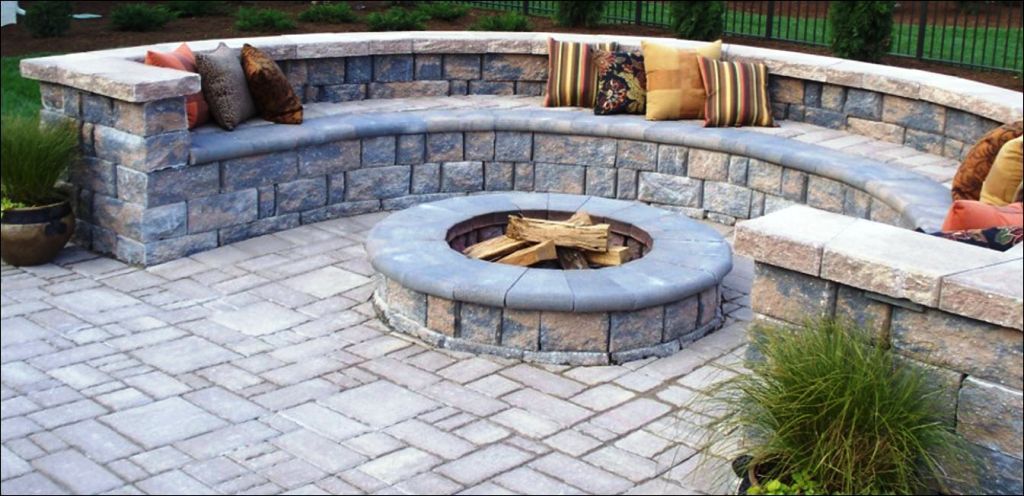
solvida
Stone Patio Paving Costs
If you’re planning to expand your outdoor living space by adding a new stone patio, one of the first things to consider is your overall budget for the project. Stone patio paving costs vary greatly depending on patio size, material selection, labor, installation method, site preparation and access. Establishing a budget upfront will help answer how much stone patios cost because your budget will determine the size of your patio and type of paving material for your project can save you many hours of time researching and greatly reduce the amount of time it takes to obtain quotes from patio construction contractors.
Below you will find general stone patio paving costs along with information about patio construction methods and paving material options such as concrete, natural stone and interlocking pavers.
Paving Materials & Installation
There’s a large variety of patio paving materials on the market today to meet just about any budget. They come in many shapes, sizes, colors and textures in both natural and manufactured finishes. Some of the more popular paving choices today are interlocking pavers, brick, stamped concrete and natural flagstone.
For a paver, brick or flagstone patio, the installation area will need to be excavated and a level surface prepared before installing your pavers, bricks and flagstone material. A level surface can prepared by pouring concrete or by compacting several inches of road base or crushed granite which has the added benefit of facilitating drainage. Once a level surface is in place, pavers will be installed on top of a layer of sand whereas bricks and flagstone are typically installed on top of mortar. Once the pavers or stones have been laid out in pattern, pavers are finished by brushing sand between the joints and for a finished look, natural stone can be finished and bonded with mortar.
For a stamped concrete patio, the installation area should be excavated to ensure the base of the patio sits several inches below the ground. To ensure a stable surface and a smooth edge, the area should have both a rebar grid and bender board outline in place before the concrete is poured. To create a more natural look, concrete can be both colored and textured. For example, if you like the look of a flagstone patio, you can achieve this with concrete by using a specialty flagstone stamp. The stamp is imprinted in a natural looking pattern on the concrete before it dries. Colored stain can also be used to create specific colors or a natural stone finish.
Cost of Stamped Concrete Patios
The cost of a stamped concrete patio will likely be a little less because there are less materials and labor involved as compared to pavers and flagstone. Typically, you should expect to pay $3,400 to $6,800 to create a medium-large stamped concrete patio from scratch.
Cost of Flagstone Patios
The cost of a flagstone patio will likely be a little more than stamped concrete due to increased labor costs. Typically, you should expect to pay $3,600 to $7,200 to create a medium-large flagstone patio from scratch.
Cost of Paver Patios
The cost of paver patio construction will cost more than all others due to increased material and labors costs. For example, you should expect to pay $4,000 to $8,000 to create a medium-large paver patio from scratch.
Which Patio Is Right For You?
When considering the kind of patio you should have installed, a few things to keep in mind will be your terrain, the level of maintenance you prefer, your style, your budget and the overall maintenance involved.
Installation Area
If the installation area for your new patio is heavily sloped, you might consider having a concrete slab installed. The preparation involved with creating a level surface gets tricky and more costly when preparing for stonework and a heavily shifting terrain can compromise mortar joints between stones or lead to shifting in your pavers. On the other hand, if you have drainage concerns in the installation area, pavers may be the way to go as they rest on a base of crushed granite and sand, allowing water to flow.
Maintenance
As for ongoing maintenance, all paved patios have their pros and cons. Concrete slabs and mortared stone patios should be cleaned and/or sealed every 1 to 3 years to keep a beautiful finish. You can expect mortared stonework (natural flagstone patio) to show a few cracks after some time and this mortar can be patched. While paver patios do not need to be sealed, you may need to add some sand between the pavers every couple of years to replace what has been lost due to natural erosion. Because pavers are not bonded in place, they are generally easier to repair than mortared stonework or concrete surfaces.
Style
When it comes to style, we would suggest either a concrete patio or a paver patio if you want a clean, sleek look. Natural stonework will give you a more rustic look with imperfections and variations in color and texture. If you want a rustic look without the imperfections, consider stamping/staining concrete to look like natural stone or using a flagstone paver.